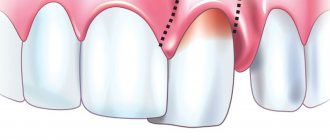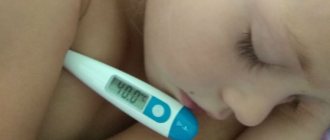Brownish sputum is a mixture of saliva and mucus that appears in the respiratory tract. In addition, it contains dust, immune system cells, harmful microorganisms, blood components and lung decay products. Experts say if you cough up brown mucus in the morning, it's a sign of lung disease. Any change in its color is evidence of a bacterial or viral infection.
Type of sputum
Doctors call sputum a substance that is formed from saliva, mucus and bronchial cells. In the absence of diseases, it should be transparent, and its amount should not exceed a tablespoon per day. It can occur in people who smoke, those who work in hazardous workplaces, and those who inhale dry air for a long time.
The color can vary from light to dark, it all depends on what disease has affected the human body.
The discharge of yellow sputum indicates diseases such as:
- bronchitis;
- pneumonia;
- sinusitis;
- hepatitis;
- various tumors;
- cirrhosis of the liver;
- gallstones.
Yellow sputum may be a sign of hepatitis.
A yellow-greenish tint may indicate the presence of:
- acute bronchitis, and purulent;
- pneumonia;
- tuberculosis.
The rusty color indicates vascular injuries, that is, the blood, having reached the oral cavity, has had time to oxidize and turn into clots. This can happen for several reasons:
- painful cough;
- pneumonia, which led to vascular injury;
- pulmonary embolism.
If you produce yellow-green sputum, you may suspect inflammation in the lungs.
Brown or dark sputum may also indicate the presence of blood. This is possible in the following situations:
- if a person has a congenital pathology in the form of a bulla, and it was close to the lungs and for some reason suddenly ruptured, in such a situation brown sputum is expectorated through the oral cavity without coughing;
- gangrene of one or two lungs can be accompanied not only by brown discharge with an unpleasant odor, but also by fatigue, vomiting, and elevated body temperature;
- development of bronchitis;
- with lung cancer, in addition to brown mucus, there is a cough, weight loss, and increased sweating;
- During tuberculosis, a paroxysmal cough with brown sputum occurs, increased sweating at night, loss of appetite, weight loss.
The cause of brown sputum may be a cancerous tumor in the lungs.
Gray sputum when coughing can be observed with:
- gangrene of the lung;
- oncological diseases;
- smoking;
- pulmonary edema.
White color is characteristic of the following pathologies:
- with ARVI, thick sputum with mucus occurs;
- in case of cancer (especially lungs), it has a white color with blood impurities, in addition there is weight loss and rapid fatigue;
- asthma, during attacks of which light or clear sputum is released.
Any color other than clear or white is considered pathological.
The discharge of white sputum is characteristic of asthma
Causes of brown discharge
Why does the color of sputum change? Brown mucus is a criterion for many diseases. Discharge in the morning appears due to the fact that the muscles of the sternum contract, trying to eliminate everything on their own. Rusty sputum occurs in patients with a disease caused by an infection. Rusty-colored sputum is considered a reason for concern and a visit to the doctor. This tone is often observed with pneumonia. Red sputum indicates the presence of blood, but unlike pinkish mucus there is much more of it. In this case, the mucus radically changes color with the formation of veins.
Brown sputum occurs due to inflammation (usually the lungs). Brown sputum when coughing indicates necrosis (death) of the lung tissue. Thick brown sputum with mucus is characteristic of diseases that are associated with damage to the respiratory system by various infections. This also includes polluted air and tobacco smoking. If we consider cough from this point of view, then it is an absolutely natural phenomenon, because coughing when smoking appears as a cleansing function (removing mucus from the respiratory system). In any case, when mucus is released, it is necessary to consult a pulmonologist. Pharmaceutical substances are prescribed depending on the personal characteristics of the body.
What does brown sputum tell us when coughing?
In a healthy person, the glands of the trachea and bronchi secrete about 100 ml of tracheobronchial secretion daily. It covers the mucous membrane of the airways, thereby creating protection from dust and pathogenic bacteria.
In the presence of a pathogen or other provoking factor, the physical characteristics of this fluid change: the volume and viscosity increase so that as many irritating elements as possible are removed from the bronchial tree. Thickening of the secretion leads to a slowdown in its excretion and accumulation on the surface of the mucous membrane. Subsequently, this substance is expectorated during coughing.
Changes in the transparency and color of sputum occur due to the presence of macrophages and lymphocytes - immune cells capable of neutralizing foreign organisms. They penetrate the tracheobronchial mucus from the blood by increasing the permeability of the walls of blood vessels. Together with them, red blood cells penetrate into the mucous secretion, which, when disintegrating, turn it brown.
The color of sputum may change when coloring substances contained in the inhaled air enter it. “Smoker's Bronchitis” is a prime example of this. Then the expectorated dark clot of mucus, in addition to dead blood cells, contains tobacco tar. They also tint the discharged secretion brown.
Basics about phlegm
Each type of lung disease is accompanied by the production of sputum of a certain type and color:
- white sputum is considered normal and can be produced by a healthy person if its amount does not exceed the permissible norm;
- yellow often indicates allergic diseases and bacterial infections;
- green may indicate a protracted chronic process in the respiratory tract;
- brown may signal that blood cells - red blood cells - are disintegrating in the respiratory organs due to previous bleeding;
- Scarlet sputum indicates ongoing bleeding.
What diseases cause such sputum?
Brown sputum when coughing indicates congestion in the respiratory system. Their development is promoted by inflammatory respiratory diseases, viral infections and other pathogenic factors that affect the viscosity of tracheobronchial secretions.
People with diseases characterized by:
- inflammation of the bronchi and lungs;
- necrosis of tissues of the respiratory organs;
- blockage of pulmonary blood vessels;
- the presence of pathological neoplasms in the respiratory tract.
The appearance of brown sputum during a sore throat indicates that the infection has spread down the larynx and invaded the trachea.
Bronchitis as a cause
The most common cause of brown sputum is bronchitis. On the bronchial mucosa there are many cells that are responsible for the functions of the body, and each has its own significance. The goblet is responsible for protecting the lungs and cleansing them. Cilia, moving upward, help the body get rid of dust and other impurities. The mucus closes the bronchi so that no negative factors can affect the body as a whole. In this case, the expectorated sputum is brown in color.
When the bronchi become inflamed, the cilia are unable to protect them, and dust, along with the infection, enters the bronchi, resulting in obstruction. This is exactly what the mechanism of development of bronchitis looks like, in which the cough attacks mainly in the morning.
Tuberculosis
The disease can be identified using the following symptoms:
- general malaise;
- fast fatiguability;
- shiver;
- dry painful cough, especially at night and in the morning.
One of the reasons for the appearance of brown sputum may be tuberculosis.
If the disease progresses, the skin may change to a pale color. There is weight loss and pain in the chest. Body temperature can reach 39-40 degrees.
We recommend reading: Cardiac cough: how to distinguish and what to do?
Pneumonia
If shortness of breath, difficulty breathing, or pain in the sternum appears, this means that the process of infection of the lung tissue has begun. In this case, there is rapid fatigue, pain in muscle tissue, first a dry and then a wet cough, and at the same time coughing up brown sputum.
A complication of pneumonia can be an abscess, which appears due to infection of the lung tissue. This creates a cavity in the lungs where sputum collects.
In what cases is sputum normal?
The bronchial mucosa, consisting of cells, is covered with cilia. They are constantly on the move. The basis of sputum is mucus, which is produced by goblet cells. It is necessary to cleanse the body of all impurities in the form of dust, dirt, and microbes.
The release of clear sputum in a small amount is not a deviation and is necessary for the normal functioning of the bronchi
Without secretion, the bronchi would become covered with dust, soot and other harmful impurities, and accordingly, the tissues would be constantly inflamed. Therefore, a small amount of light-colored sputum should be gradually released from the body and come out.
Smoking
Tobacco smoking is fraught with a host of pathological changes in the upper and lower respiratory tract. If you believe medical statistics, numerous genetic mutations are found in the oral cavity, on the epithelium of the mucous membrane of the bronchi and lungs in smokers.
Smoking causes problems for many reasons. First of all, capillary permeability increases, blood leaves the vessels and settles in the sputum.
The body perceives the substance as a pathogenic organism and begins more active mucus synthesis. The result is oxidation of the hematological fluid.
In addition, destruction of small blood vessels is detected due to their stenosis or occlusion by cholesterol plaques.
This is a dangerous condition. Over time, the destruction of large main vessels and the development of malignant tumors occurs.
Bronchiectasis
Bronchiectasis of the lungs
Bronchiectasis is rarely primary. Those most at risk are representatives of hazardous professions, athletes, smokers, children who have had pneumonia and bronchitis.
The essence of the pathological process is the formation of sac-like structures in the area of the bronchial alveoli. They expand and are filled with serous-purulent exudate. The pus is multi-layered, multi-colored.
The condition is extremely dangerous, as it is fraught with the development of secondary infectious lesions of the lungs of an extensive type.
Oncological diseases
They occur frequently. Lung cancer, in its own way, holds the record for mortality and incidence.
The nature of the process is the degeneration of healthy lung tissue into atypical forms, followed by proliferation and infiltrative penetration into surrounding and distant organs and tissues through metastasis. The mortality rate of lung cancer is high.
There are other reasons not indicated in this list, but their proportion is so small that it is not of great importance. Brown sputum is always a warning sign.
basic information
Each type of pulmonary disease is accompanied by copious expectoration of mucus of a certain color and type:
- white sputum is completely normal;
- yellow or red may indicate the presence of an infection or some kind of allergic disease;
- green - a sign of a chronic process in the lungs and respiratory tract;
- brown sputum when coughing is evidence of the breakdown of blood cells in the respiratory organs;
- scarlet or red mucus is evidence of bleeding.
Smokers
Mostly brown sputum appears in a smoker in the morning. When a person sleeps, mucus accumulates, and when he wakes up, phlegm begins to leave the bronchi naturally. A person who smokes for a long time eventually develops so-called smoker's bronchitis. Moreover, the cough becomes his constant companion. Naturally, smokers do not monitor their health, so they do not pay due attention to the color of the discharge. They are accustomed to a morning cough and do not consider this a cause for concern. However, brown sputum is considered an ideal breeding ground for bacteria.
Thus, by introducing harmful smoke into the body, smokers slowly poison it with heavy elements. Therefore, it is better to give up such a bad habit in order to exclude more serious diseases and complications in the future. People who have continuously consumed harmful cigarette smoke for several years in a row need to cleanse their lungs. To do this, you can use breathing exercises, which are popular today, with which you can improve the health of the entire body. The doctor may also prescribe you expectorant medications or a more gentle healing option using inhalations. Visit the clinic and the doctor will tell you which method is best for you. The doctor will monitor your health throughout the course of therapy, so no complications will arise.
Smoker's chronic bronchitis
Chronic bronchitis of a smoker develops gradually: a person begins to cough in the morning, which indicates an accumulation of sputum in the bronchi. The cough becomes more intense, and the discharge when the person coughs up turns brown, indicating the presence of pus; shortness of breath appears, infectious diseases take longer and are more severe.
If a smoker does not give up the addiction, morphological changes begin in the bronchi and lungs: severe cough and shortness of breath, shortness of breath with palpitations when exposed to cold air and wind. But the most dangerous consequence is chronic obstructive pulmonary disease, or COPD. This life-threatening lung disease is characterized by persistent disruption of airflow from the lungs. About 90% of cases of this disease occur in people who started smoking in adolescence. Currently, the disease is incurable; treatment can only slow down its progression.
Pulmonologists point out another danger that a smoker's cough poses: unlike other more dangerous lung diseases, it is usually not accompanied by an increase in temperature. This property can mask the onset of more severe forms of lung diseases.
An experienced smoker is also familiar with a cough immediately after smoking, which does not appear until the first cigarette.
Experts say that the brown mucus released is a mixture of body secretions and tar that the smoker carries into the lungs during the smoking process.
Now we are talking not only about cigarettes, but also about rolling papers, pipes, hookahs, etc.
Moreover, smokers are a separate risk group. They are more susceptible to COPD; any mucous saliva spit out by a smoker is a reason to seriously think about quitting the bad habit. Even if it's just transparent. It is important for the patient to monitor the accompanying symptoms, because if sputum, shortness of breath, and chest pain come together, then a visit to the doctor and a thorough examination (even a fluorogram may not always show abnormalities in the lungs) are not only inevitable, but also necessary.
And if phlegm is felt only in the morning, what is it?
In some pathologies, the secreted tracheobronchial secretion is expectorated only in the morning. This is explained by the fact that the fluid released during sleep accumulates in the lower parts of the nasopharynx, and then, when the body position changes, it begins to move down the trachea, simultaneously irritating the cough receptors. In a healthy person, the result of a morning cough is usually clear mucus.
However, this indicator changes due to the presence of foreign impurities:
- Brown sputum in the morning becomes one of the signs of “smoker's bronchitis.” The coloring of the secretion occurs due to the accumulation of tar and other combustion products of tobacco.
- The appearance of a morning cough with the release of a small amount of mucus may be a consequence of reflux esophagitis. With it, due to the weakness of the sphincter muscles, the contents of the stomach are thrown into the esophagus and throat. This provokes inflammation of the mucous membrane of the digestive tract, and then the trachea.
- Chronic inflammation of the bronchi. In this case, in the morning hours, a small amount of sputum is coughed up, the color of which becomes yellow or yellow-green during exacerbation. It occurs against the background of prolonged inhalation of caustic chemical compounds contained in the air (tobacco smoke, dust, exhaust gases, toxic fumes).
- Exacerbation of bronchiectasis. The patient complains of the appearance of sputum with pus in the morning, loss of strength, low-grade body temperature, shortness of breath, and bluish discoloration of the skin.
- Congestion in the bronchi and lungs is a specific symptom of heart disease.
Morning cough in children is considered a characteristic sign of adenoiditis - chronic inflammation of the pharyngeal tonsil of the lymphopharyngeal ring. Develops due to frequent ARVI.
Symptoms of the disease
Brown sputum is an indicator of the presence of clotted blood and can accompany the course of many lung diseases, both acute and chronic. For example, it may indicate the following diseases:
- acute bronchitis;
- Chronical bronchitis;
- pneumonia (lobar, focal, influenza);
- tuberculosis;
- lungs' cancer;
- pulmonary edema;
- infarction manifestations in the lungs.
Some organic and inorganic substances can also cause brown discharge. In any case, the appearance of brown sputum is a reason for an immediate visit to a pulmonologist in order to quickly identify the cause of the onset of bleeding.
Many experienced smokers are familiar with the so-called smoker's cough, but not everyone realizes that a cough accompanied by brown sputum, especially in the morning, is one of the symptoms of smoker's chronic bronchitis - a dangerous lung disease.
Cough in smokers in the morning occurs due to the fact that at night phlegm accumulates in the bronchi, and after getting up, as a result of a change in body position, it moves, irritating the reflexogenic zones, causing a cough.
Tobacco smoke has a destructive effect on all human systems and organs, but the bronchi and lungs suffer first. This is due to the fact that the tars and poisons contained in tobacco smoke inhaled by the smoker, as well as the high temperature at which it enters the lungs, have a destructive effect on the epithelium lining the walls of the respiratory organs. This leaves them open to pathogens.
Associated symptoms
They occur as additional, optional signs that make up the clinical picture.
It is important to keep in mind: dark mucus is never the only sign. The fact that you cough up brown mucus in the morning is not an indicator.
Accordingly, we can talk about the following characteristic symptoms:
- Increase in body temperature to subfebrile-febrile values. Indicates either an infectious process, or tuberculosis, or oncology, if elevated thermometer values are constantly maintained.
- An alarming symptom is constant pain in the chest when inhaling and exhaling. This is a direct indication of the presence of a pathological process in the lower respiratory tract. This phenomenon may be absent in the presence of focal small-segmental lesions.
- Breathing problems in the form of shortness of breath or suffocation are common. One differs from the other in intensity.
We recommend reading: Blue lamp (Minin reflector): instructions for use, efficiency, cost
The described symptoms need to be considered in conjunction with the main manifestation - brown sputum when coughing and its shade. A specific diagnosis can only be made by a doctor based on the results of an objective study.
Diseases with sputum production
A specialist can help in this matter, so you need to contact the clinic. After all, the appearance of sputum and its shade can tell a lot about the presence of a disease or pathology in the human body. Therefore, medication therapy and the use of traditional medicine can be prescribed by a doctor, based on the symptoms and identifying the disease.
People who smoke a lot may notice that brown mucus forms in the throat in the morning and is coughed up. Due to inhalation of harmful cigarette smoke, the size of the discharge increases. In addition, such a habit is harmful to health, since a colossal number of harmful substances enter the bronchi along with smoke. In this case, the body tries to remove all elements hazardous to health. Please note that even a common cold causes expectoration.
Phlegm is mucus from disease processes in the airways and lungs that is expelled when coughing. However, if complications are present in the body, the normal clear mucus may include pus. If parents notice such discharge in a child, it is necessary not to delay a visit to the doctor, because such a symptom is dangerous for the child. When a patient’s doctor discovers the discharge of brown sputum, we can talk about bronchitis.
Sputum mixed with brown spots appears due to external conditions: dust, paints or other irritants of the mucous membrane. Mucus in tuberculosis is of a special nature - the patient has bloody streaks, purulent discharge with mucus. Mucus in pneumonia is often mixed with saliva and can include bacteria, cellular detritus, cells of the immune system, dust formation, and blood elements. The tone of the discharge depends on the disease process and its stage. Thus, sputum presents a huge variety of colors, such as white, yellow, grayish, greenish, pinkish, scarlet, brown, dark, rust color. Each shade of which indicates a specific disease of the respiratory system.
What to do if brown sputum appears?
A pulmonologist treats diseases associated with inflammation of the airways. You can get to him through a therapist who will give you a referral. Before visiting a specialist, it would be advisable to do a sputum test.
To do this, you need to purchase 2 sterile containers. The day before the test, drink plenty of warm water. In the morning, before hygiene procedures, you need to collect material for research: take 2-3 deep breaths and cough up sputum. Then spit approximately the same amount into each of the jars separately: for the clinical and bacteriological laboratory.
Diagnosis of some diseases will require testing several times.
Diagnostics
A patient with complaints of viscous sputum undergoes a comprehensive examination by a pulmonologist. Valuable information is provided by physical examination methods: palpation (chest pain), percussion (local zones of dullness, box sound), auscultation (moist rales of various sizes, weakened breathing, bronchophony). The diagnostic plan includes the following laboratory and instrumental methods:
- Radiography.
A standard X-ray of the chest cavity is performed to detect local pathology—foci of infiltration or decay of lung tissue, signs of developmental anomalies. Additionally, fluoroscopy is performed. To examine the structure of the chest organs in detail, a computed tomography scan is needed. - Spirometry.
A study of pulmonary function shows a decrease in FEV1, signs of obstructive or restrictive respiratory disorders. To differentiate between COPD and bronchial asthma, a test with salbutamol is performed, based on the results of which the degree of reversibility of obstruction is assessed. - Invasive research.
Bronchoscopy is performed to examine the inner surface of the bronchi, identify signs of inflammation, and take mucus samples. To assess the structure of the bronchial tree and diagnose chronic bronchitis and bronchiectasis, bronchography is done with a contrast agent. - Sputum analysis.
Under microscopy, mucus contains a large number of neutrophils (in infectious inflammation), Charcot-Leyden crystals and Kurshman spirals (in bronchial asthma). To clarify the etiology of the pathological process, bacteriological culture of the resulting secretion is performed. - Additional laboratory methods.
Typical deviations in the hemogram: leukocytosis with a shift to the left in bacterial infections, lymphocytosis in viral pathogens, eosinophilia in allergic lung diseases. In blood biochemistry, acute phase indicators and IgE levels are determined. Sometimes an extended immunogram is prescribed.
When auscultating the lungs, moist rales of various sizes are heard
Diagnosis of sputum by consistency and smell
In order to evaluate this criterion, it is necessary to expectorate sputum into a transparent glass container, evaluate it immediately, and then remove it, cover it with a lid, and let it sit (in some cases, the sputum may separate, which will help in diagnosis).
- Mucous sputum: it is released mainly during ARVI;
- Liquid colorless is characteristic of chronic processes developing in the trachea and pharynx;
- Foamy white or pinkish sputum is released during pulmonary edema, which can accompany both heart disease and inhalation gas poisoning, pneumonia, and inflammation of the pancreas;
- Sputum of a mucopurulent nature can be released with tracheitis, sore throat, bacterial bronchitis, complicated cystic fibrosis and bronchiectasis;
- Vitreous: characteristic of bronchial asthma and COPD.
An unpleasant odor is characteristic of complicated bronchiectasis or lung abscess. A fetid, putrid odor is characteristic of lung gangrene.
If the sputum separates into two layers when standing, it is probably a lung abscess. If there are three layers (the top one is foamy, then liquid, then flaky), this may be gangrene of the lung.
Smoker's chronic bronchitis
The development of this disease occurs gradually . First, a person coughs in the morning, then the intensity and frequency of the cough increases, and the expectorated sputum becomes brown, which is a sign of the presence of pus in its composition. In addition, smokers experience shortness of breath, and illnesses are much more complex and take longer to develop.
If a smoker does not quit smoking, certain changes occur in the lungs and bronchi: shortness of breath is accompanied by an accelerated heartbeat, and it becomes very difficult to cough up. However, the most dangerous and unpleasant consequence is COPD (chronic obstructive pulmonary disease).
This disease can be very life-threatening. In most situations, it is encountered by people who became addicted to tobacco at a young age. In this case, black or dark sputum may be observed when coughing with various inclusions (streaks). Unfortunately, this disease is even now considered incurable, and therapeutic methods are aimed only at slowing it down.
Experts note another danger of a smoker’s cough: in comparison with other pulmonary diseases, it does not involve an increase in body temperature . This property can hide the course of severe forms of pulmonary diseases.
Pulmonologists also say that brown sputum also contains tar remaining after smoking.
In addition, smokers are included in a separate risk category. These people are very vulnerable to COPD. Any mucus that is excreted from the body is a serious reason to think about quitting smoking, even if the phlegm is completely clear. The smoker should also carefully monitor other symptoms.
Possible complications
Over time, smokers may develop malignant neoplasms in the oral cavity, upper and lower respiratory tract. With the progressive course of pneumonia, there is a risk of developing severe respiratory failure, which is treated in an intensive care unit with the help of artificial ventilation. If large vessels are damaged, pulmonary hemorrhage may occur - this condition requires urgent hospitalization in the intensive care unit.
Treatment methods
Therapy is specific and depends on the symptom of which disease is cough with brown secretion. The most commonly prescribed medications are:
- Non-steroidal anti-inflammatory analgesics. They suppress the activity of the inflammatory process and relieve pain. These include “Depiofen”, “Ibuprofen”, “Ketanov”, “Arthrocol”.
- Expectorants and mucolytics – “Mukolvan”, “Lazolvan”. They dilute mucus and facilitate the process of its removal.
- Bronchodilators - dilate the bronchi, making breathing easier.
Surgical interventions are indicated for some forms of tuberculosis, as well as for oncological pathologies.
Treatment rules
To speed up the removal of sputum, you can use warming. Compresses, mustard plasters and inhalations - all this can be recommended by a specialist if the mucus is extremely difficult to remove.
If such procedures do not give a positive result, and in the morning you still expectorate brown sputum with streaks or dots, then you should adhere to the following rules:
- eat more vegetables and fruits;
- reduce the amount of fats and carbohydrates you consume;
- drink more fluids;
- use medications.
Traditional medicine
Taking some folk remedies will help facilitate the process of mucus discharge, as well as improve its dilution. An infusion of pine buds in milk, which must be kept for about one hour, has worked well. It has a softening and moisturizing effect on the mucous membrane of the bronchial tree.
A decoction of marshmallow grass, mint leaves and plantain, prepared in a water bath, is good for removing phlegm. It must be taken at least three times a day, preheated. You can drink onion broth with sugar, but it does not taste very good.
If a symptom such as a cough with brown sputum appears, it is better not to self-medicate, but to seek help from a doctor! He will prescribe the necessary examinations to identify the cause of such a cough and recommend effective treatment methods.
Folk remedies to improve sputum output
To speed up the removal of sputum, you should obtain a doctor’s recommendation and, in everyday circumstances, take additional measures to promote the free discharge of sputum.
Previously, there were no drugs, so diseases with sputum were treated with natural ingredients:
- You need to add a couple of pine buds (fresh) to boiled milk. The broth should stand and brew for about 60 minutes. To keep the tincture warm, cover the container with milk with a towel. So, the broth will be more saturated. The prepared drink helps get rid of infections and softens the respiratory tract.
- To prepare the onion recipe, you need to boil 2 vegetables (unpeeled) in 0.5 liters of water for about an hour. During the process of boiling the onions, you need to add sugar (a glass) to the container. You need to consume the solution 125 ml up to 3 times a day.
- Take a tablespoon of plantain, marshmallow, mint (chopped) and steam for an hour. The prepared tea should cool down, after which it can be taken half a glass twice a day.
Therapy for wet cough using traditional medicine methods is selected taking into account the patient’s age, symptoms, individual tolerance of pharmaceuticals or their individual components.
Preventive measures consist of preventing factors causing respiratory diseases (hypothermia, decreased immunity, stressful conditions, lack of vitamins, exposure to drafts, increased physical activity), and eliminating interaction with external irritants. In addition, it is important to refrain from harmful habits and lead a healthy lifestyle.
Possible causes of sputum without cough and additional symptoms
Sputum is mucus that is secreted by glandular cells of the trachea, nasal cavity, paranasal sinuses and bronchi. Normally, no more than 100 ml of mucus accumulates in the tracheobronchial tree per day. It has bactericidal properties and is involved in the removal from the respiratory tract:
- dust;
- allergens;
- pathogenic agents.
When the mucous membrane is irritated, the activity of glandular cells increases 10 times or more. Therefore, in case of illness, up to 4 liters of pathological sputum are produced per day.
Expectoration of mucus without coughing is a nonspecific symptom that accompanies pathologies of various systems:
- respiratory;
- digestive;
- endocrine;
- nervous.
To find out the cause of the condition, you need to determine:
- the nature of sputum - elasticity, transparency, color, smell;
- associated symptoms – chest pain, sore throat, burning sensation in the nose;
- factors that provoke exacerbation are strong odors, physical activity, drinking hot drinks, etc.
Expectoration of mucus without coughing in half of the cases indicates damage to the nasopharynx or bronchopulmonary system.
Worm infestation
If a child or adult does not cough up clear or white sputum, the cause may be helminthiasis. In the acute phase, parasite larvae circulate in the blood and enter the bronchi. They irritate the mucous membrane, causing a productive cough. A person complains about:
- chest pain;
- swelling of the mucous membranes;
- shortness of breath;
- nausea.
When the mucus is swallowed, the worms enter the intestines, where they develop into adults. In the later stages, helminthiasis manifests itself:
- abdominal pain;
- unstable stool;
- weakness;
- sleep disturbance;
- elevated temperature;
- convulsions.
We recommend reading: A child has a runny nose and festering eyes: causes and treatment
With a chronic disease, immunity decreases, so rhinitis, tracheitis, and influenza often recur.
Esophageal diverticulum
An esophageal diverticulum is a saccular bulge in the wall of the esophagus. It manifests itself as dysphagia, bad breath, and a feeling of a lump in the throat. Many people experience hypersalivation - excessive production of saliva, so they complain of copious sputum discharge without coughing attacks.
Associated symptoms depend on the location of the diverticulum. The most striking clinical picture when a protrusion forms in the clavicle area:
- change in voice timbre;
- nausea;
- scratching in the throat;
- expectoration of thin sputum;
- regurgitation of food;
- backflow of mucus from the esophagus into the throat.
Large diverticula put pressure on the respiratory system, causing coughing. It is combined with chest pain and dizziness.
Inflammation of the adenoids
Sputum without cough in a child appears against the background of adenoiditis. This is the name for inflammation of an enlarged nasopharyngeal tonsil. The adenoids block the nasal passages, so viscous secretions accumulate in the nasal cavity. During sleep, it flows into the throat through the back wall of the pharynx.
Manifestations of adenoiditis:
- night snoring;
- violation of nasal breathing;
- coughing up yellow mucus;
- restless sleep;
- headache;
- elevated temperature.
There is no cough while awake. It occurs in the morning or immediately after waking up due to irritation of the throat by nasal secretions. If left untreated, the Eustachian tube becomes inflamed (eustachitis), so the child complains of decreased hearing acuity and ear pain.
Sjögren's syndrome
Sputum without fever and cough is one of the signs of Sjögren's disease. It is characterized by damage to connective tissue and exocrine glands. Accompanied by sinusitis and tracheobronchitis, separation of rusty sputum.
Symptoms of Sjögren's disease:
- muscle and joint pain;
- dry eyes;
- seizures in the corners of the mouth;
- violation of the act of swallowing;
- prostration;
- dry tongue;
- formation of crusts in the nose;
- enlargement of the parotid glands.
The mucous membrane of the throat dries out and acquires a bright red tint. If the glands are insufficient, the saliva becomes viscous.
Due to dysphagia (impaired swallowing), the patient cannot swallow it. Therefore, there is a feeling of mucus accumulation in the throat.
Allergy
Sputum production without coughing is one of the signs of a respiratory allergy. Irritants (allergens) are:
- medicines;
- plant pollen;
- Food;
- fumes from household chemicals;
- dust mites.
Manifestations of respiratory allergies:
- labored breathing;
- redness of the throat mucosa;
- nasal congestion;
- lacrimation (with hay fever);
- pain when swallowing;
- hoarseness of voice.
Depending on the location of the inflammation, the allergy occurs with or without a cough.
Patients complain of expectoration of clear, viscous sputum, which sometimes becomes glassy. In the absence of treatment, the clinical picture is supplemented by new symptoms - spasmodic cough, shortness of breath, swelling of the mucous membranes.
Pharyngitis, laryngitis, tonsillitis
Phlegm in the throat without cough in children and adults occurs due to inflammation:
- palatine tonsils – tonsillitis;
- pharynx – pharyngitis;
- larynx - laryngitis.
If the secretion is transparent, this indicates the onset of the disease or the attenuation of inflammation. In the absence of complications, the cough does not bother you, and small amounts of sputum are expectorated. If it becomes thick and green, purulent inflammation is possible.
The release of viscous mucus without coughing after laryngitis is a sign that the inflammation has become chronic.
Sinusitis and rhinitis
Thick mucus is released without coughing in case of inflammation of the nasopharynx and paranasal sinuses. Copious sputum is expectorated in the following diseases:
- Rhinitis (runny nose). Inflammation of the nasal mucosa is accompanied by the secretion of viscous mucus. Its transparency and elasticity depend on the form of the disease. An infectious runny nose produces yellow or green mucus. In people with insufficient tone of blood vessels, vasomotor rhinitis occurs, in which a transparent secretion is formed. With atrophic rhinitis, foul-smelling green sputum occurs.
- Sinusitis. When the maxillary sinuses become inflamed, sinusitis occurs, the ethmoid sinuses - ethmoiditis, the sphenoid sinuses - sphenoiditis, and the frontal sinuses - frontal sinusitis. If you cough up white, thick mucus without coughing, the cause of the illness is a viral infection or allergy. With bacterial and fungal inflammation, it acquires a yellow or green tint and an unpleasant odor.
Expectoration of mucus without coughing occurs mainly in the morning, as during the night it flows down the back wall of the throat into the hypopharynx.
Other reasons
Foul-smelling mucus without coughing is a dangerous symptom that occurs against the background of purulent inflammation of the ENT organs. Without treatment, complications are possible - abscess and gangrene of the lung, sepsis (blood poisoning).
Possible causes of expectoration:
- lungs' cancer;
- pulmonary syphilis, disintegration of syphilitic gum;
- bronchopulmonary carcinoma;
- cystic fibrosis;
- pulmonary mycosis;
- actinomycosis;
- bullous disease;
- pleural empyema;
- COPD
Yellow sputum without cough is a sign of bacterial diseases of the nasopharynx. If clots of dried blood are found in it, this indicates mucopurulent inflammation. Brown sputum in the morning without cough occurs with bronchiectasis and cardiac pathologies.
Symptoms of the disease
Brown sputum in the morning may be a sign of clotted blood. It can also be a symptom of certain diseases:
- chronic and acute form of bronchitis;
- tuberculosis;
- influenza, focal and lobar pneumonia;
- pulmonary edema;
- lungs' cancer;
- manifestations of a heart attack, etc.
Certain inorganic and organic chemicals can also cause brownish or gray discharge in the morning. One way or another, the appearance of brown sputum is a good reason for a mandatory visit to a pulmonologist.
People who smoke know a lot about smoker's cough, but not all of them know that brown discharge when coughing can be a sign of chronic bronchitis .
A cough in heavy smokers, especially in the morning, appears for the simple reason that at night mucus accumulates in the bronchi, and when getting up in the morning, due to a change in the position of the body, it moves, causing a cough.
Tobacco smoke has a destructive effect on all internal organs and systems of the human body, but the lungs and bronchi suffer the most from this substance. This is due to the fact that the poisons and tars present in tobacco smoke and inhaled during smoking have a detrimental effect on the condition of the epithelium that lines the walls of the respiratory organs. In addition, they become more vulnerable to pathogenic bacteria.
What to do if you produce sputum without coughing?
If sputum is produced for a long time, consult a physician or pulmonologist. During the interview, the doctor will clarify:
- how long ago the symptom appeared;
- presence of bad habits and occupational hazards;
- tendency to allergic reactions.
To determine the cause of expectoration of mucus without coughing, a diagnosis is carried out:
- physical examination - examination of the throat, listening to the lungs;
- endoscopic examinations – broncho-, rhino- and pharyngoscopy;
- hardware methods - MRI of the chest, radiography of the lungs, ultrasound of the pleural cavity;
- laboratory tests - microscopic examination of sputum, general blood test, allergy tests.
To exclude helminthiasis, fungal infection of the lungs and syphilis, an enzyme-linked immunosorbent test is prescribed to determine antibodies to the pathogen. If tuberculosis is suspected, the quantiferon test and the Mantoux test are recommended.
Treatment options depend on the cause of excessive mucus production. Conservative therapy involves taking medications, physical procedures - magnetic therapy, inhalations, chest massage, UHF therapy. The basis of pharmacotherapy is:
- antibiotics – Doxycycline, Amoxiclav, Augmentin;
- anthelmintics – Vermox, Trichlorophen, Piperazine;
- anti-tuberculosis drugs - Pyrazinamide, Ethionamide, Isoniazid;
- antifungal drugs - Itraconazole, Fluconazole, Isavuconazole.
To facilitate the removal of sputum, mucolytic and expectorant drugs are used - Mucaltin, Tussin, Bronkatar, ACC.
There are several dozen diseases in which sputum is expelled without coughing. Some of them do not pose a threat to health, while others are fraught with dangerous complications. Therefore, if such a symptom appears, you should not postpone a visit to a therapist or pulmonologist.
Drug therapy
The choice of treatment depends on the specific disease, the symptom of which is the production of brown sputum. In most cases, the doctor prescribes the following medications:
- Expectorant, mucolytic agent: Lazolvan, Mukolvan. Taking them helps to liquefy and remove brown mucus.
- Taking bronchodilators helps expand the bronchi, ease breathing, and relieve shortness of breath.
- Suppression of the activity of the inflammation process and pain relief occurs due to non-steroidal analgesics: Ketanov, Nise, Ibuprofen.
- Surgical intervention is required for oncology, tuberculosis, bronchiectasis.










